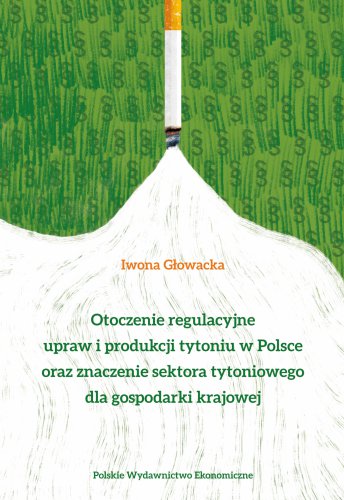The impact of the regulatory environment on the development of tobacco cultivation and production and on the importance of the tobacco sector for the Polish national economy
Publication date: 2020
Place publication: Warszawa
Publication: I
Binding: paperback
Format: B5
The dissertation is a detailed and multi-faceted assessment of the impact of the regulatory environment on the development and production of tobacco in Poland and of the importance of the tobacco sector for the Polish national economy. The analysis of selected legal regulations concerning different aspects of the functioning of the state and society, such as the pursuit of agricultural activities, the system of taxation, the system of health protection, have demonstrated a direct or indirect impact on shaping the legal situation of the tobacco industry. The identification made in this respect has enabled a judgement on the cohesion of the relevant Polish and European legislative policy and has resulted in conclusions on the effectiveness of the rules laid down and their actual impact on the economic situation of tobacco growers and other participants in the tobacco industry.
In the process of scientific research, a formative-dogmatic method, a historical legal method, as well as, to the extent necessary, the comparative legal method were used. Due to the link between the analysed topic and economic sciences together with sociology, the findings were also made by using a methodology appropriate to these fields of science, including the empirical method. Also valuable to the conclusions of the dissertation were the results of the application of the economic analysis of law (Law and Economics), statistical analysis and theoretical-economic analyses, with the use of the Laffer curve.
Studies have shown significant problems with the integrity of objectives and the adequacy of regulatory legal instruments that the legislator applied while shaping the legal conditions of tobacco production and all remaining legal aspects behind the functioning of the tobacco industry. The main shortcoming would seem to be the lack of consistency during the determination of legal provisions to do with tobacco cultivation within the framework of national and EU agricultural policies, the regulation of the process of industrial tobacco production, the admissibility of tobacco consumption, the tobacco market, taxation, combating the black market and reducing the negative health effects of tobacco use in society.
Presenting the conclusions of de lege lata and the postulates of de lege ferenda has been done with reference to the doctrinal concept of legal action, which distinguishes individual elements of normative solutions in the relevant area depending on the legal situation resulting directly from the juridical structure of the regulated subject, with the distinction of “segments” of the legal regulation, which may be included in different legal and organisational structures.
In light of the above, it was possible to demonstrate the impact that the evolving legal regulations in question and their interconnectedness had on the deteriorating position of the tobacco sector in the national economy.
| Odbiór osobisty | 0 € |
| Kurier Inpost | 4 € |
| Kurier FedEX | 4 € |
| Inpost Paczkomaty | 4 € |
| Free delivery in Reader's Club | from 47 € |


